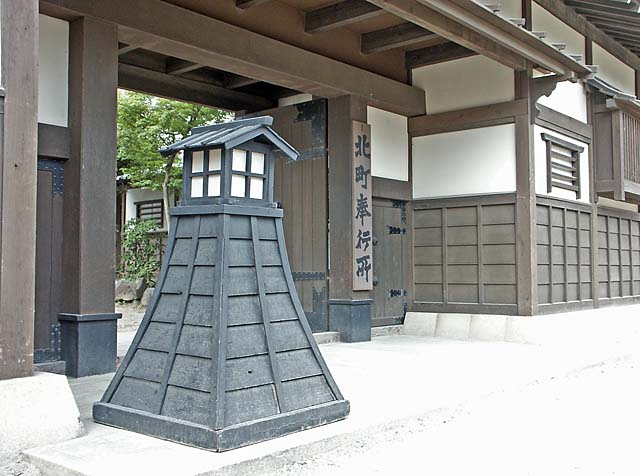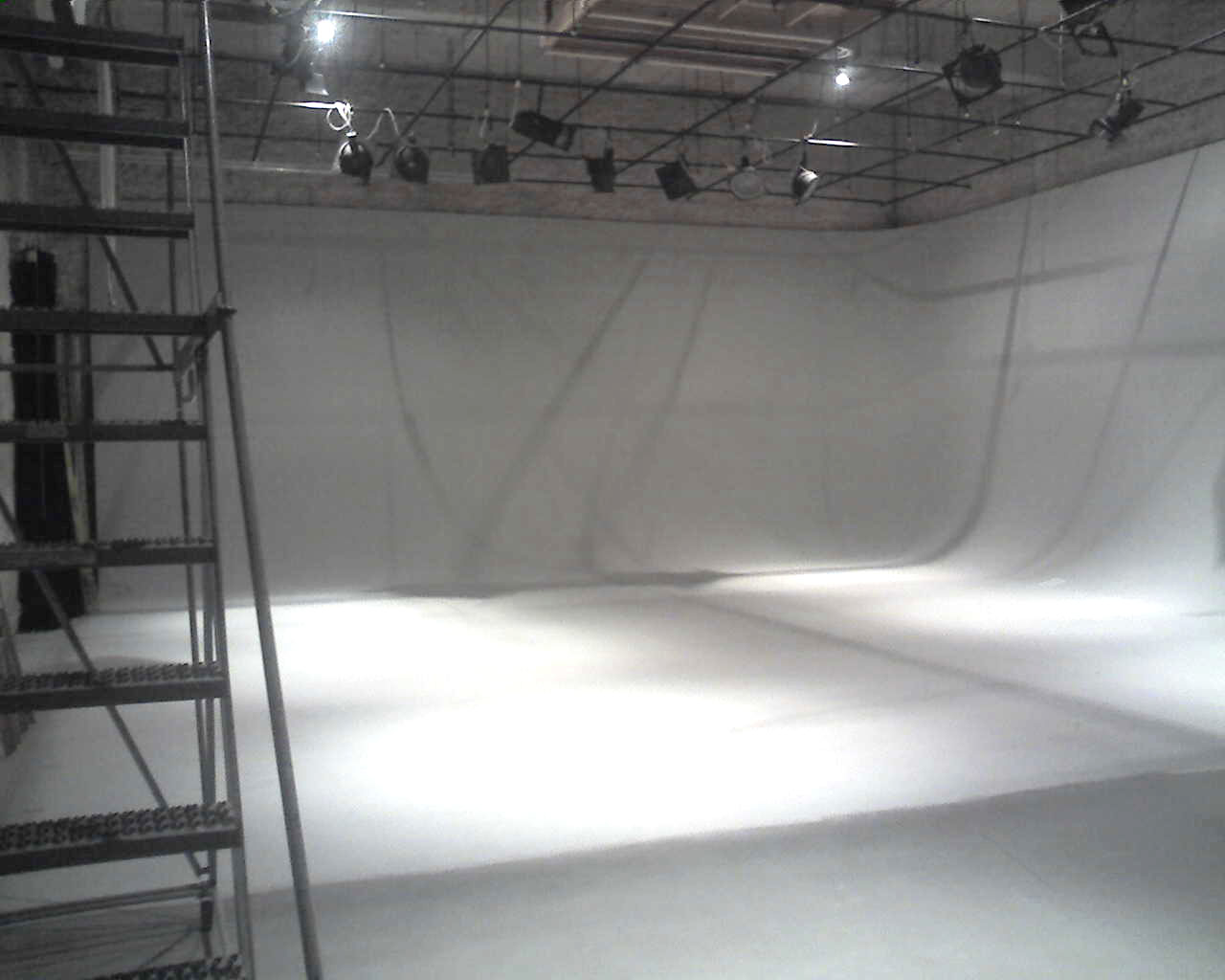|
The Snow Woman
is a 1968 Japanese fantasy horror film directed by Tokuzō Tanaka and produced by Daiei Film. The film is an expanded adaptation of the Yuki-onna short story as it appeared in the 1904 collection '' Kwaidan: Stories and Studies of Strange Things'' by Lafcadio Hearn. Plot The film opens on two sculptors walking through a snow-covered forest in feudal Japan. The men find a large tree that the elder master wants to cut down and carve into a statue of the Buddhist goddess Kannon. A blizzard begins and the men shelter in an abandoned cottage. While sleeping, a woman enters the cottage and freezes the master to death. She spares the younger apprentice (Yosaku), making him promise to not tell anyone what he saw or she will kill him. Later, Yosaku is living with the old master's widow. The large tree is cut down and brought to the village. Yosaku is instructed to carve the statue that the old master would have wanted, which is to be placed in the temple. A young woman (Yuki) traveli ... [...More Info...] [...Related Items...] OR: [Wikipedia] [Google] [Baidu] |
Tokuzō Tanaka
was a Japanese film director. He is well known for directing the ''Zatoichi'' and ''Nemuri Kyōshirō'' film series. Biography Tanaka graduated from Kwansei Gakuin University. In 1948, he joined the Daiei Film, Daiei studio and started working as an assistant director under Kon Ichikawa, Kenji Mizoguchi and Kazuo Mori etc. In 1958, Tanaka was promoted to director and debuted with ''Bakeneko Goyōda''. Tanaka received the Japan Directors Guild Special award for his ''Akumyō, Akumyō series films''. In 1971, he was released from his contract with Daiei and become a freelance director when the studio shut down film production. As a freelance director he directed a lot of jidaigeki television dramas such as ''Hissatsu series''. His final work was in the 2007 short film ''Shonen Kawachiondotori Monogatari''. In December 2007, he died of Intracranial hemorrhage. Selected filmography Television * ''Ronin of the Wilderness'' (1972-74) * ''Nemuri Kyōshirō (TV series), Nemuri Ky� ... [...More Info...] [...Related Items...] OR: [Wikipedia] [Google] [Baidu] |
Bugyō
was a title assigned to ''samurai'' officials in feudal Japan. ''Bugyō'' is often translated as commissioner, magistrate, or governor, and other terms would be added to the title to describe more specifically a given official's tasks or jurisdiction. Pre-Edo period In the Heian period (794–1185), the post or title of ''bugyō'' would be applied only to an official with a set task; once that task was complete, the officer would cease to be called ''bugyō''. However, in the Kamakura period (1185–1333) and later, continuing through the end of the Edo period (1603–1868), posts and titles came to be created on a more permanent and regular basis.Kinihara, Misako''The Establishment of the Tosen-bugyō in the Reign of Ashikaga Yoshinori'' (唐船奉行の成立 : 足利義教による飯尾貞連の登用) Tokyo Woman's Christian University. ''Essays and S.tudies''. Abstract. Over time, there came to be 36 ''bugyō'' in the bureaucracy of the Kamakura shogunate. In 1434, Ash ... [...More Info...] [...Related Items...] OR: [Wikipedia] [Google] [Baidu] |
Blu-ray
Blu-ray (Blu-ray Disc or BD) is a digital optical disc data storage format designed to supersede the DVD format. It was invented and developed in 2005 and released worldwide on June 20, 2006, capable of storing several hours of high-definition video ( HDTV 720p and 1080p). The main application of Blu-ray is as a medium for video material such as feature films and for the physical distribution of video games for the PlayStation 3, PlayStation 4, PlayStation 5, Xbox One, and Xbox Series X. The name refers to the blue laser used to read the disc, which allows information to be stored at a greater density than is possible with the longer-wavelength red laser used for DVDs, resulting in an increased capacity. The polycarbonate disc is in diameter and thick, the same size as DVDs and CDs. Conventional (or "pre-BDXL") Blu-ray discs contain 25 GB per layer, with dual-layer discs (50GB) being the industry standard for feature-length video discs. Triple-layer discs (10 ... [...More Info...] [...Related Items...] OR: [Wikipedia] [Google] [Baidu] |
Kadokawa Shoten
, formerly , is a Japanese publisher and division of Kadokawa Future Publishing based in Tokyo, Japan. It became an internal division of Kadokawa Corporation on October 1, 2013. Kadokawa publishes manga, light novels, manga anthology magazines such as '' Monthly Asuka'' and '' Monthly Shōnen Ace'', and entertainment magazines such as '' Newtype''. Since its founding, Kadokawa has expanded into the multimedia sector, namely in video games (as Kadokawa Games) and in live-action and animated films (as Kadokawa Pictures). History Kadokawa Shoten was established on November 10, 1945, by Genyoshi Kadokawa. The company's first publication imprint, Kadokawa Bunko, was published in 1949. The company went public on April 2, 1954. In 1975, Haruki Kadokawa became the president of Kadokawa Shoten, following Genyoshi Kadokawa's death. On April 1, 2003, Kadokawa Shoten was renamed to Kadokawa Holdings, transferring the existing publishing businesses to Kadokawa Shoten. On July 1, 2006, ... [...More Info...] [...Related Items...] OR: [Wikipedia] [Google] [Baidu] |
Location Shooting
Location shooting is the shooting of a film or television production in a real-world setting rather than a sound stage or backlot. The location may be interior or exterior. When filmmaking professionals refer to shooting "on location", they are usually referring to a "practical location", which is any location that already exists in the real world. The filming location may be the same in which the story is set (for example, scenes in the film ''The Interpreter (2005 film), The Interpreter'' were set and shot inside the Headquarters of the United Nations, United Nations Headquarters in Manhattan), or it may stand in for a different locale (the films ''Amadeus (film), Amadeus'' and ''The Illusionist (2006 film), The Illusionist'' were primarily set in Vienna, but were filmed in Prague). Location shooting includes any practical location which resembles the location of a scene in the script; for example, students in the USC School of Cinematic Arts, film school of the University of ... [...More Info...] [...Related Items...] OR: [Wikipedia] [Google] [Baidu] |
Tokyo
Tokyo, officially the Tokyo Metropolis, is the capital of Japan, capital and List of cities in Japan, most populous city in Japan. With a population of over 14 million in the city proper in 2023, it is List of largest cities, one of the most populous urban areas in the world. The Greater Tokyo Area, which includes Tokyo and parts of six neighboring Prefectures of Japan, prefectures, is the most populous metropolitan area in the world, with 41 million residents . Lying at the head of Tokyo Bay, Tokyo is part of the Kantō region, on the central coast of Honshu, Japan's largest island. It is Japan's economic center and the seat of the Government of Japan, Japanese government and the Emperor of Japan. The Tokyo Metropolitan Government administers Tokyo's central Special wards of Tokyo, 23 special wards, which formerly made up Tokyo City; various commuter towns and suburbs in Western Tokyo, its western area; and two outlying island chains, the Tokyo Islands. Although most of the w ... [...More Info...] [...Related Items...] OR: [Wikipedia] [Google] [Baidu] |
Sound Stage
A sound stage (also written soundstage) is a large, soundproof structure, building or room with large doors and high ceilings, used for the production of theatrical film-making and television productions, usually located on a secured movie or television studio property. Compared to a silent stage, a sound stage is sound-proofed so that sound can be recorded along with the images. The recordings are known as ''production sound''. Because most sound in movies, other than dialogue, is added in post-production, this generally means that the main difference between the two is that sound stages are used for dialogue scenes, but silent stages are not. An alternative to production sound is to record additional dialogue during post-production (known as dubbing). Early history Structures of this type were in use in the motion picture industry before the advent of sound recording. Early stages for silent movies were built, either as a three-wall open-roof set, or with large skylights, ... [...More Info...] [...Related Items...] OR: [Wikipedia] [Google] [Baidu] |
Masao Shimizu
was a Japanese actor. His wife was actress Yumi Takano. His first starring role in the film was in ''Momoiro no Yuwaku'' in 1931. In 1947, he formed the Mingei Theatre Company. Shimizu often worked with Akira Kurosawa. He appeared in more than 250 films between 1931 and 1976. Selected filmography * '' The 47 Ronin'' (1941) * '' No Regrets for Our Youth'' (1946) as Professor Hakozaki * '' A Ball at the Anjo House'' (1947) * '' One Wonderful Sunday'' (1947) as the Dance Hall Manager * '' Drunken Angel'' (1948) as Boss * '' Stray Dog'' (1949) * '' Bōryoku no Machi'' (1950) * ''Scandal'' (1950) as Judge * '' Story of a Beloved Wife'' (1951) * '' The Life of Oharu'' (1952) * '' Children of Hiroshima'' (1952) * '' The Life of Oharu'' (1952) as kikuoji * '' Ikiru'' (1952) as Doctor * ''Epitome'' (1953) * '' Gate of Hell'' (1953) * '' Sansho the Bailiff'' (1954) as Masauji Taira * '' I Live in Fear'' (1955) as Yamazaki, Yoshi's husband * ''Season of the Sun'' (1956) * '' Black River' ... [...More Info...] [...Related Items...] OR: [Wikipedia] [Google] [Baidu] |
Mizuho Suzuki
was a Japanese actor. He was a drop-out of Kyoto University. He died on November 19, 2023, at the age of 96. Filmography Film *'' Yogiri yo Kon'yamo Arigatō'' (1967) *'' Zatoichi the Outlaw'' (1967) *''The Snow Woman'' (1968) *'' The Sands of Kurobe'' (1968) as Senda *'' Apart from Life'' (1970) *'' Fuji sanchō'' (1970) *''Battle of Okinawa'' (1971) *'' Submersion of Japan'' (1973) *'' Battles Without Honor and Humanity: Police Tactics'' (1974) as Chief editor *''Karei-naru Ichizoku'' (1974) as Kuraishi *'' Prophecies of Nostradamus'' (1974) (Secretary of Environmental Agency) *'' Battles Without Honor and Humanity: Final Episode'' (1974) as Hirate *'' Cops vs. Thugs'' (1975) *'' The Bullet Train'' (1975) *'' Proof of the Man'' (1977) as Yamaji *'' Never Give up'' (1978) as Kuga *'' The Demon'' (1978) (Detective) *'' A Distant Cry from Spring'' (1980) *'' Samurai Reincarnation'' (1981) ( Ogasawara Hidekiyo) *'' The Gate of Youth'' (1981) (Narrator) *'' The Go Masters'' (1983) ... [...More Info...] [...Related Items...] OR: [Wikipedia] [Google] [Baidu] |
Sachiko Murase
was a Japanese stage and film actress. She appeared in about 90 films between 1927 and 1991, often under the direction of Hiroshi Shimizu and Keisuke Kinoshita, and received numerous awards for her stage and film performances. Biography Sachiko Murase was born Sada Matsui in Honjo Ward, Tokyo. A graduate from Tokyo Prefectural Second Girls' High School, she joined the Tsukiji Shogekijo theatre in 1925. At the age of nineteen she became a stage actress, associated with Japan's leftist avant-garde. Murase gave her film debut in 1927 and entered the Shochiku film studio four years later. Together with her husband Kihachi Kitamura, she formed the Geijutsu Shogekijo theatre in 1937. In 1944, the year following the dissolution of Geijutsu Shogekijo, she was one of the founding members of the Haiyuza Theatre Company together with Koreya Senda, Eijirō Tōno, Chieko Higashiyama, Eitarō Ozawa and others. Since the mid-1950s, she also regularly appeared on television. She was the o ... [...More Info...] [...Related Items...] OR: [Wikipedia] [Google] [Baidu] |
Taketoshi Naitō
was a Japanese actor. He appeared in more than 70 films between 1953 and 2003. He died of lymphoma on 21 August 2012. Selected filmography Film * ''Mahiru no ankoku'' (1956) * ''An Actress'' (1956) - Akio Satomi * ''The Burmese Harp (1956 film), The Burmese Harp'' (1956) - Pvt. Kobayashi * ''Lucky Dragon No. 5 (film), Lucky Dragon No. 5'' (1959) - Announcer * ''The Scent of Incense'' (1964) - Murata * ''The Snow Woman'' (1968) * ''Coup d'Etat (1973 film), Coup d'Etat'' (1973) - Army officer * ''Shogun Assassin'' (1980) * ''The Battle of Port Arthur'' (1980) - Narrator * ''Chōchin (film), Chōchin'' (1987) * ''Luminous Moss (film), Luminous Moss'' (1992) - Novelist * ''Kamikaze Taxi'' (1995) - Domon * ''My Secret Cache'' (1997) - Morita * ''After Life (film), After Life'' (1998) - Ichiro Watanabe * ''Samurai Fiction'' (1998) - Kanzen Inukai Television * ''Minamoto no Yoshitsune (TV series), Minamoto no Yoshitsune'' (1966) - Hitachibō Kaison * ''Ōgon no Hibi'' (1978) - Akechi M ... [...More Info...] [...Related Items...] OR: [Wikipedia] [Google] [Baidu] |
Demon
A demon is a malevolent supernatural entity. Historically, belief in demons, or stories about demons, occurs in folklore, mythology, religion, occultism, and literature; these beliefs are reflected in Media (communication), media including fiction, comics, film, television series, television, and video games. Belief in demons probably goes back to the Paleolithic, Paleolithic age, stemming from humanity's fear of the unknown, the strange and the horrific.. In Religions of the ancient Near East, ancient Near Eastern religions and in the Abrahamic religions, including History of Judaism, early Judaism and ancient-medieval Christian demonology, a demon is considered a harmful spiritual entity that may cause Spirit possession, demonic possession, calling for an exorcism. Large portions of Jewish demonology, a key influence on Christianity and Islam, originated from a later form of Zoroastrianism, and was transferred to Judaism during the Achaemenid Empire, Persian era. Demons may ... [...More Info...] [...Related Items...] OR: [Wikipedia] [Google] [Baidu] |






